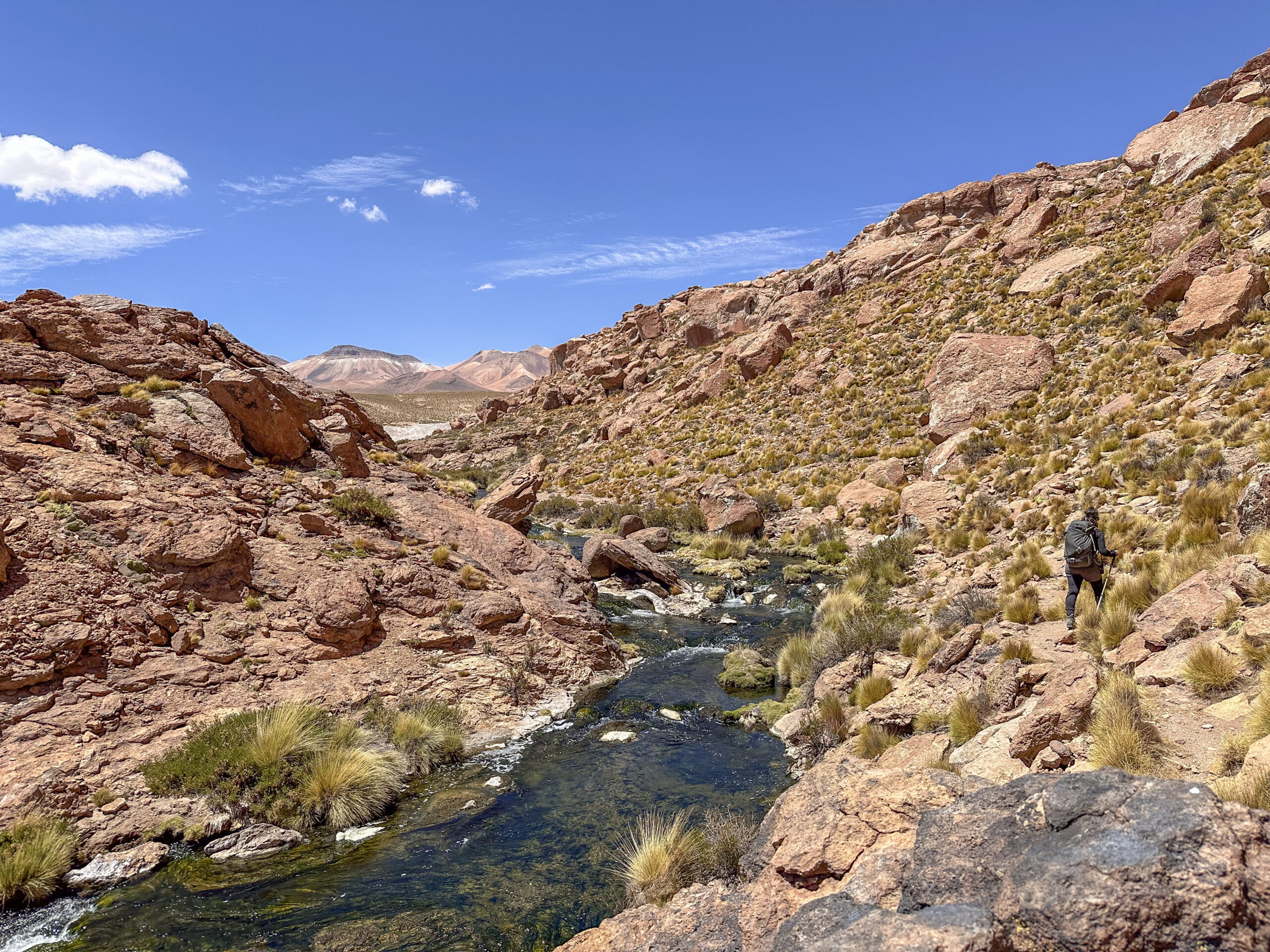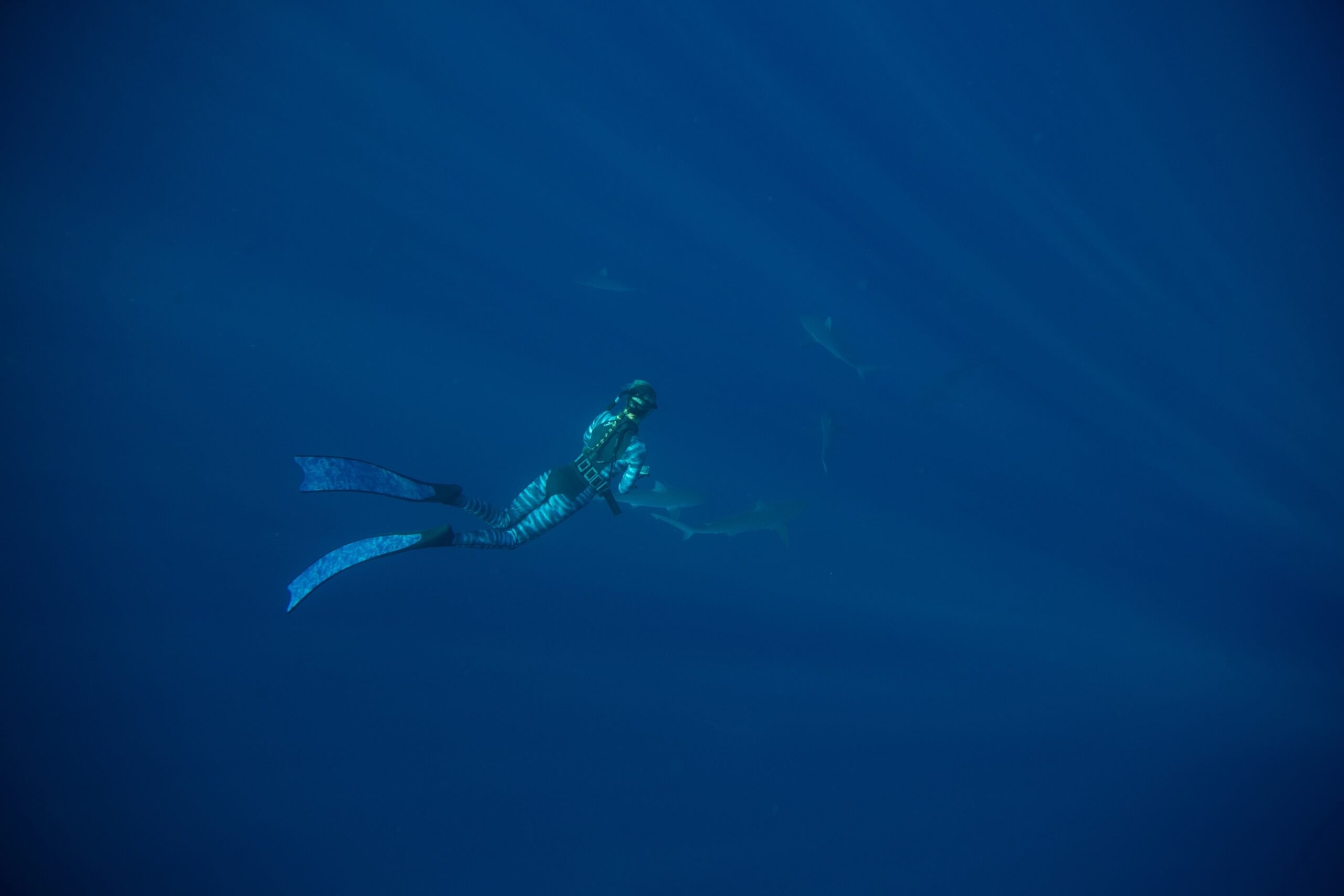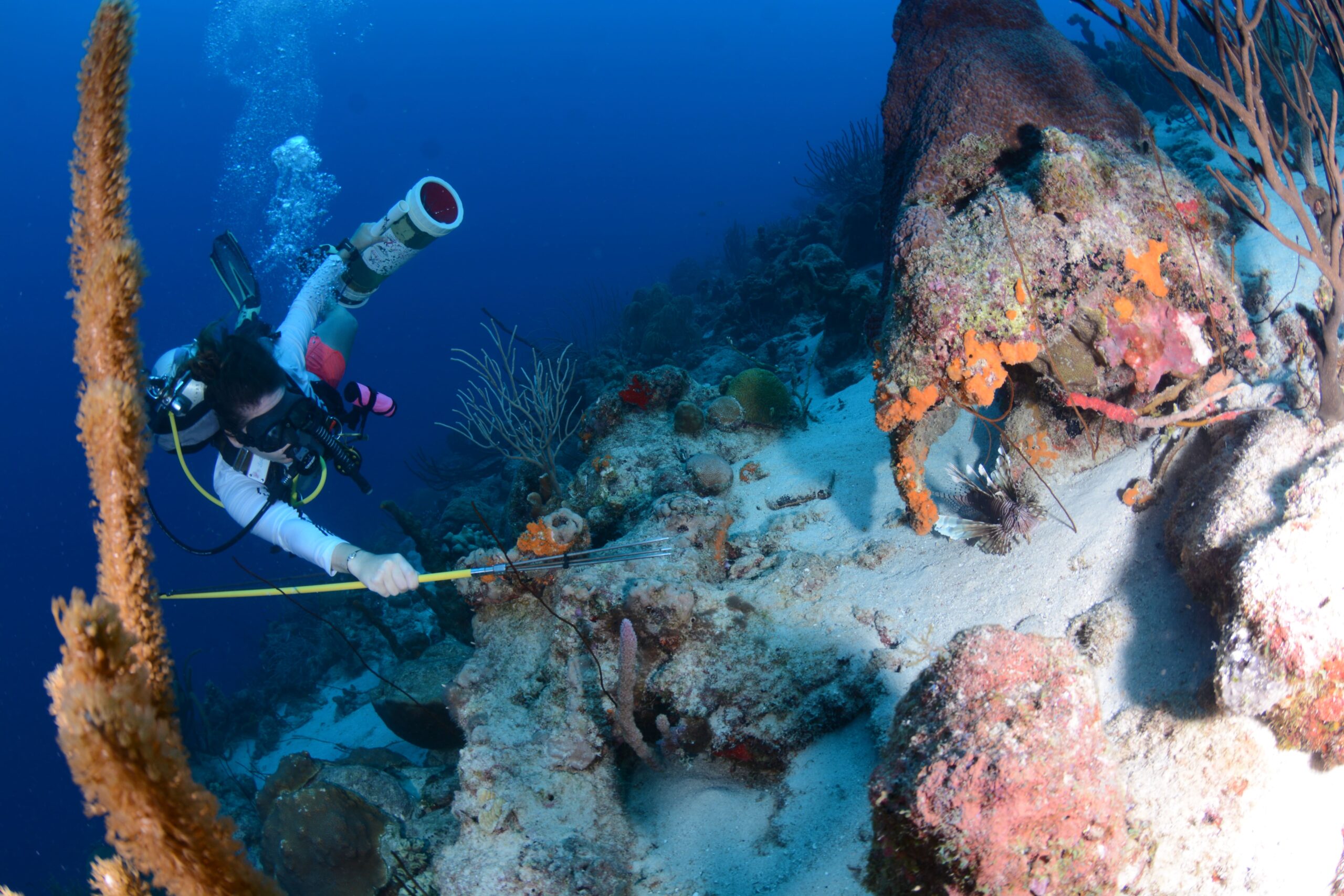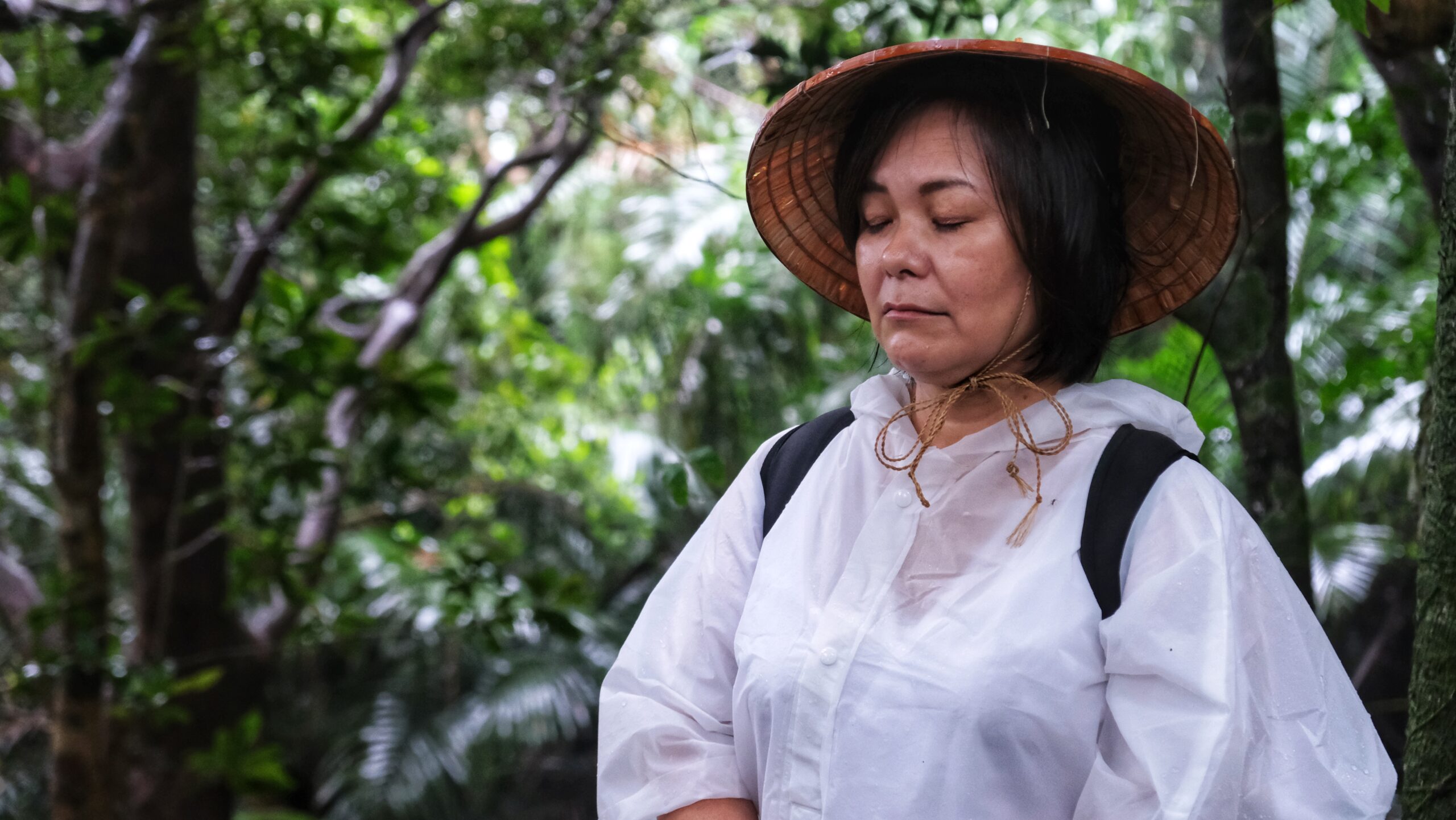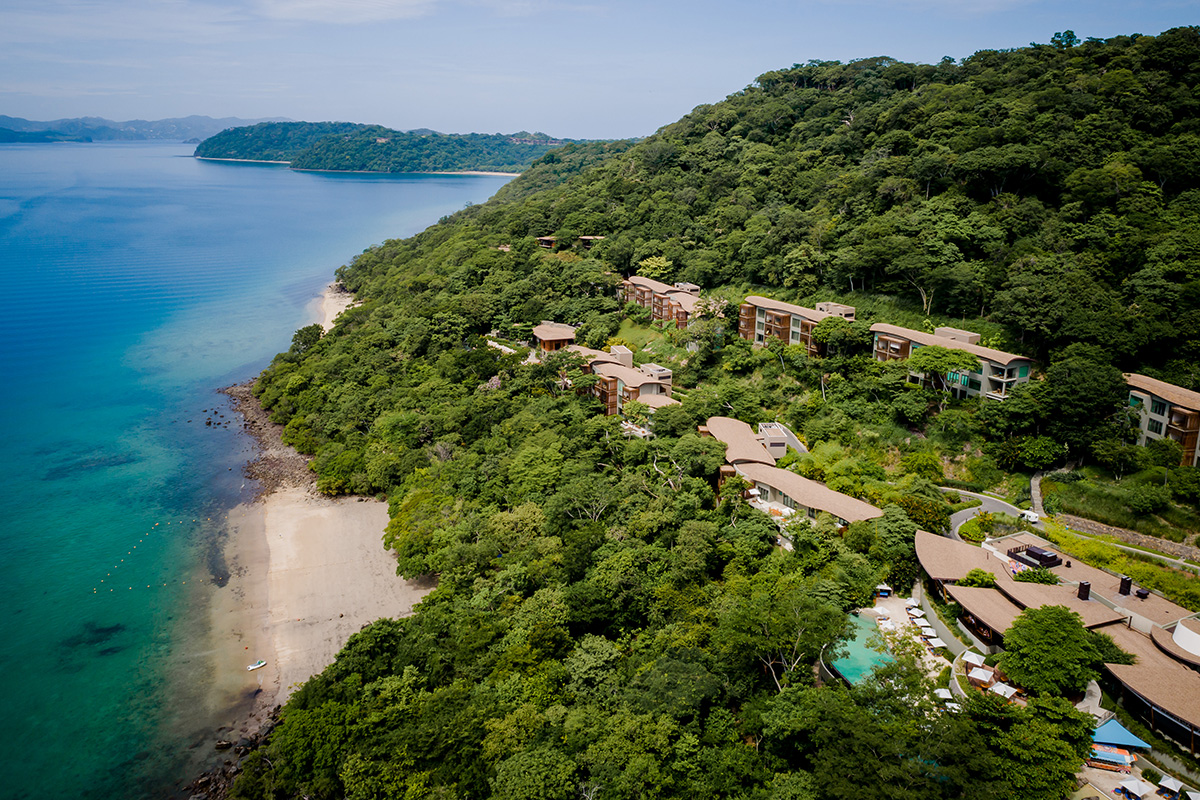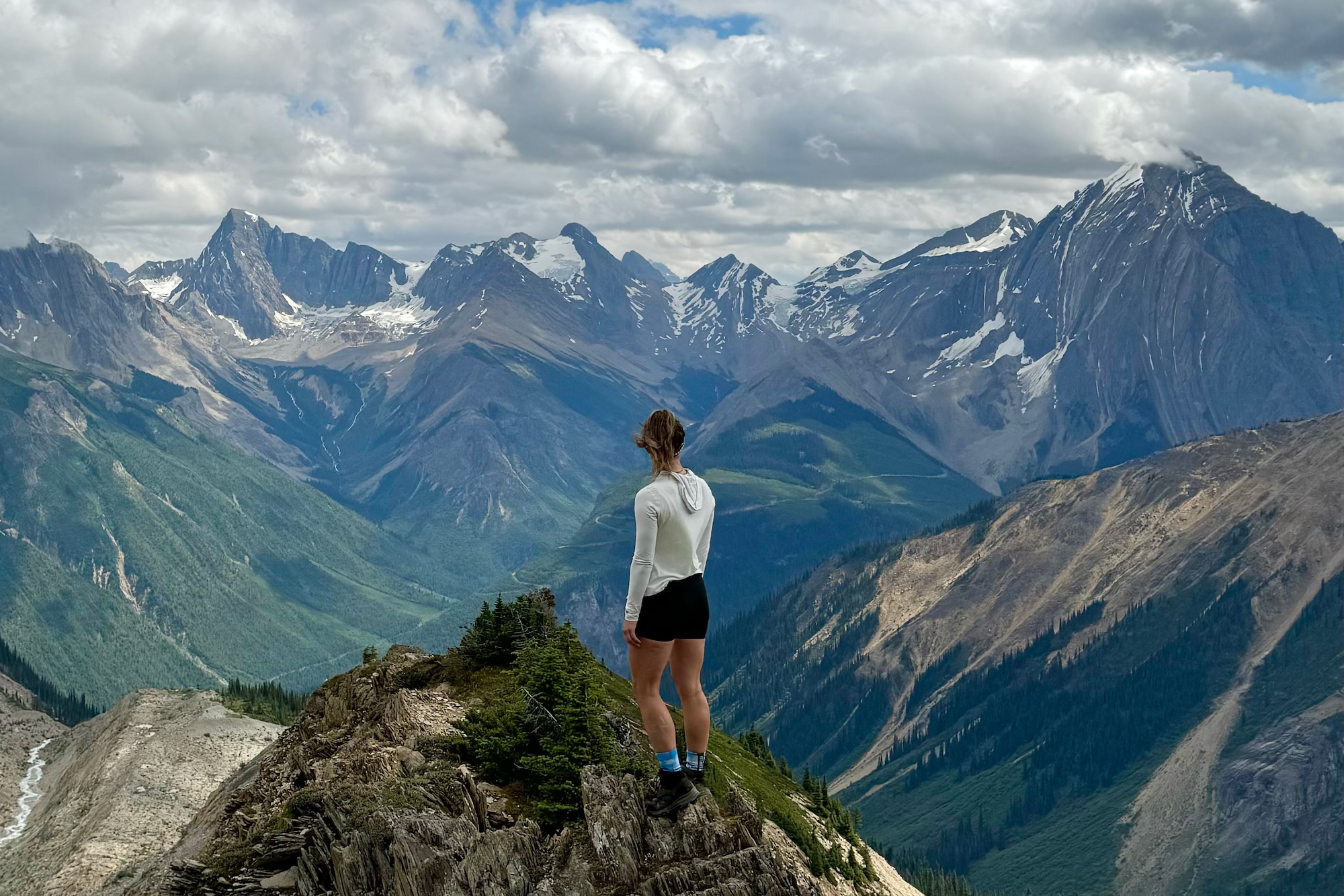NORTH STARS:
Wildlife Ecosystems
Community Support
Certifications
“Having lunch between llamas and bubbling geysers on a privately maintained trail in the Atacama Desert is the closest you’ll get to an afternoon on another planet.”
The Azure Road Take
Tourism in Chile’s Atacama Desert has exploded over the last decade for good reason: its volcanic peaks rising like ash-dusted smokestacks from the arid Martian-red earth forces travelers out of their comfort zone and into a layered world of chaotic geological history and indigenous cultural immersion. Despite the difficulty in reaching San Pedro de Atacama, the launch town for adventure activities in the area, crowds now plague many of its key sites. However, one epic hike persists as a place of private reflection and solitude: Volcán Blanco. However, there’s a catch; access to this exhilarating high-elevation trail is offered solely to guests of the Explora Lodge.
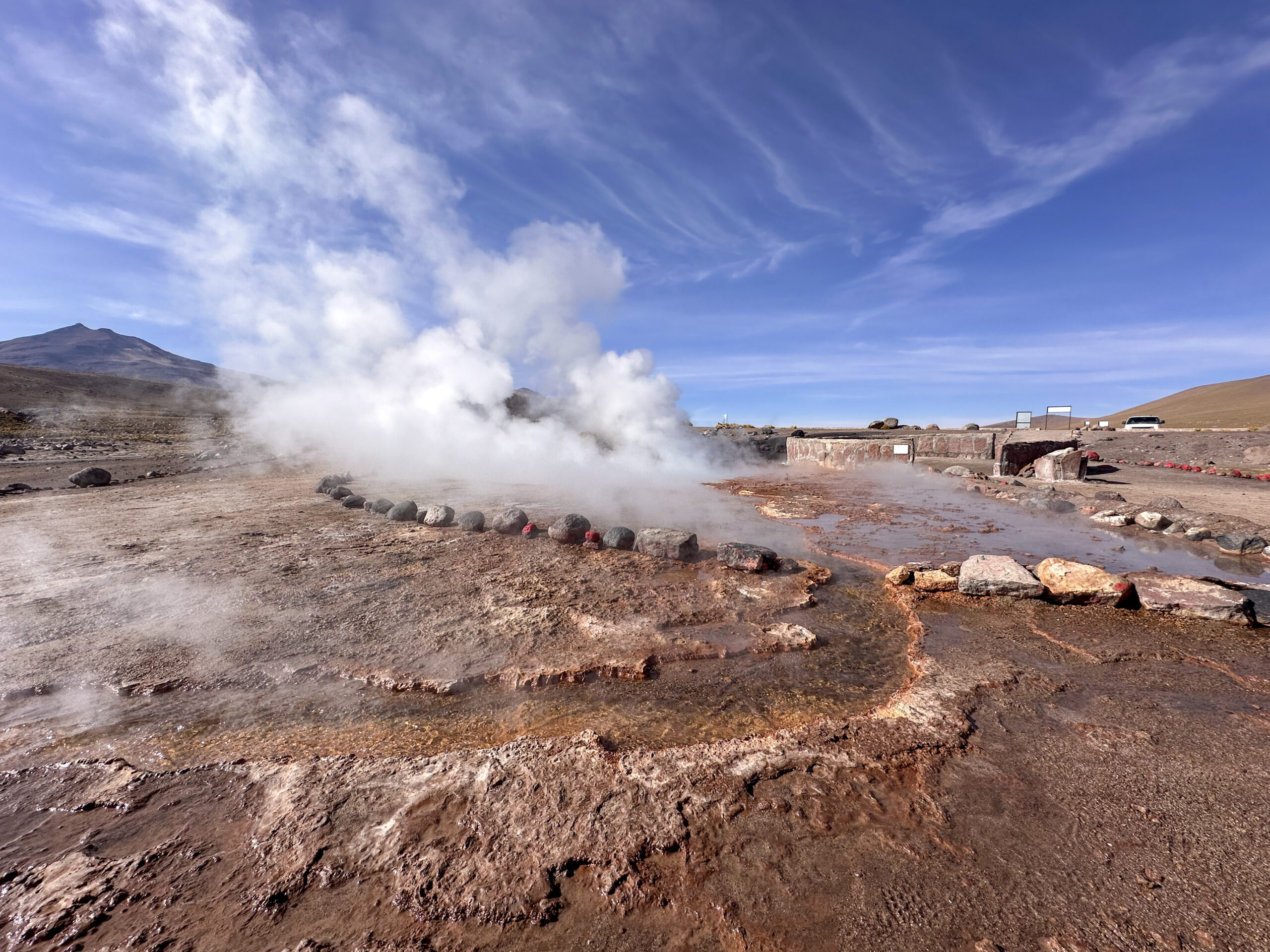
The hike starts at a popular geyser field. Courtesy of Lauren Mowery.
Who’s it for?
Physically and financially fit adventure travelers who can afford several days at Explora Lodge to acclimatize to the altitude before attempting this hike. Nature, animal, and photography enthusiasts who want an immersive day without crowds in an otherworldly landscape.
Sustainability Chops
The name Explora has become synonymous with eco-luxury. The moneyed, adventure travelers patronizing its sustainable properties around South America visit for the breathtaking locations, while selecting Explora for its sharp-as-nails guides, sympathetic designs, and regionally-inspired cocktails and cuisine. The Explora Lodge in San Pedro de Atacama stays true to those values by weaving local textiles and rustic building materials into its modern minimalist architecture. Hacienda style rooms and suites ring an expansive courtyard. Wooden planks lead to a meandering swimming pool set amidst flowering fields. At night, guests gather around the firepit to share highlights of the day over pisco sours infused with rica-rica, a local aromatic shrub. The company earned B-Corp certification for its extensive work in conservation, resource management, and community collaboration, which includes oversight and exclusive tourist use of the Volcán Blanco trail.
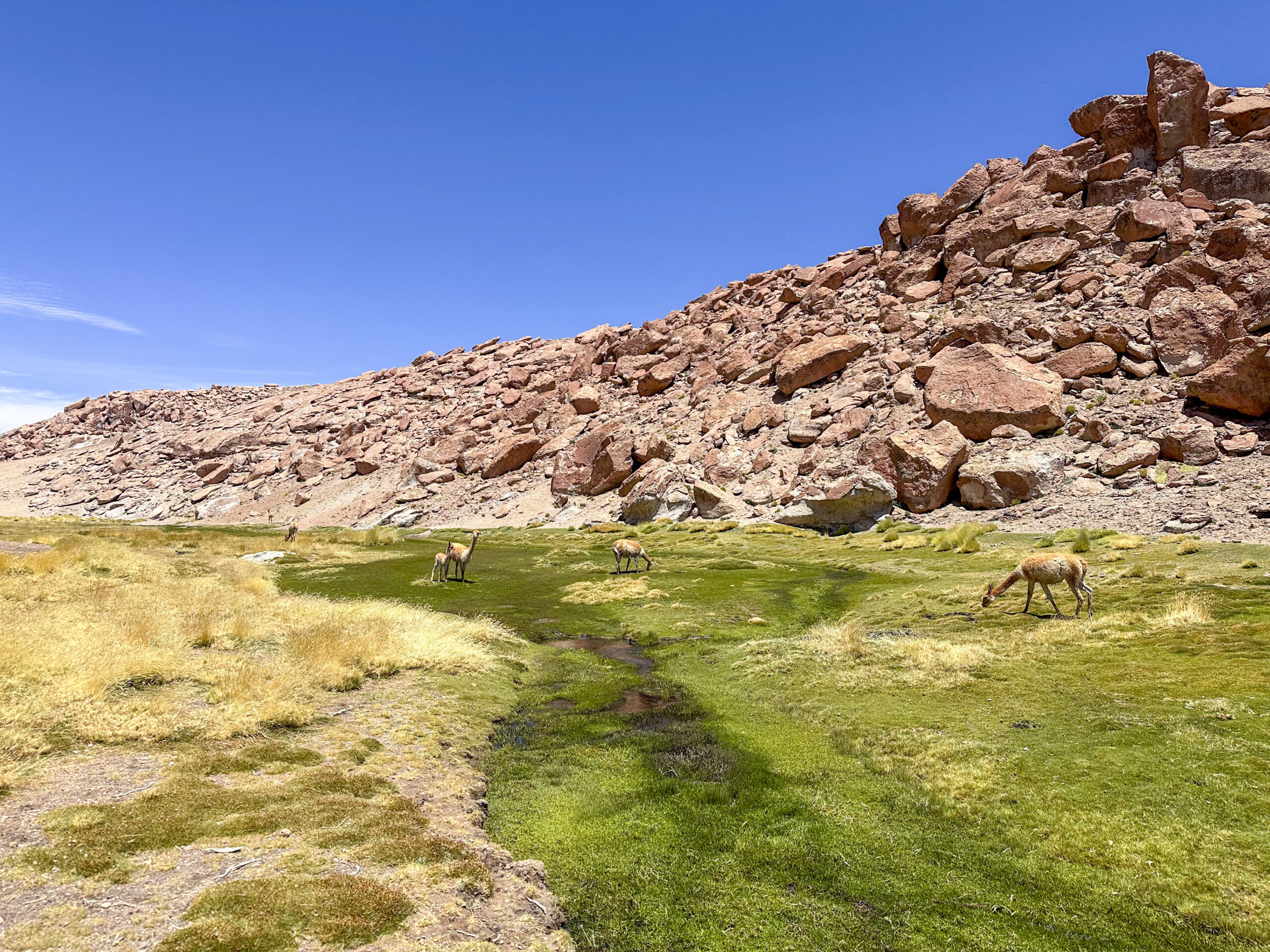
You'll hike past loads of wildlife. Courtesy of Lauren Mowery.
Location, Topography, and Wildlife
The hike starts on a high plateau, just beyond the popular geyser field El Tatio, at 13,780 feet above sea level, reaching a maximum height of 14,367 feet. After a sharp ascent, the remainder of the hike follows a downhill path, much of it along a geothermal river cutting a swath through a mix of open fields and low canyon, finishing after 4.3 miles at 12,800 feet.
Zooming out, the path traverses one side of the Tatio geysers. This geothermal field, which experts consider to be the highest in the world, largest in South America, and third largest in the world, spans 3.86 square miles and comprises hot springs and terraces. Beneath the earth lies a magmatic chamber which heats and expels the water creating more than 80 geysers in constant activity. Imagine a smaller, hike-able Yellowstone filled with red rocks, lichen fields, and llamas instead of bison and camera-toting tourists parked in vans along the highway.
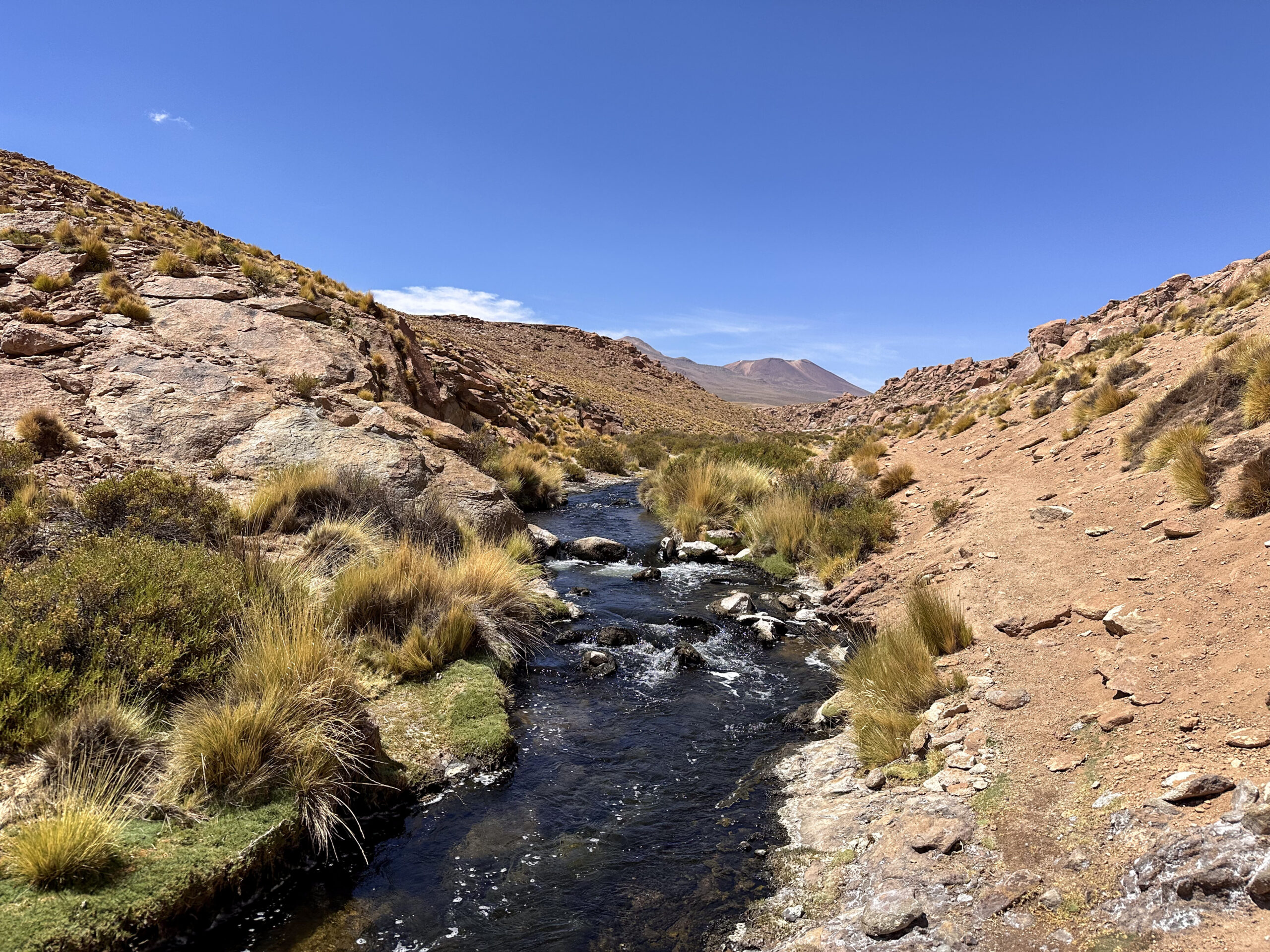
The scenery constantly changes. Courtesy of Lauren Mowery.
Zooming in, the journey starts at Apacheta, requiring careful maneuvering down a steep scree, then levels out, rising and falling gently across the day’s slow descent. A few sections demand care while scrambling up and across rocks, though nothing should prove too challenging for intermediate hikers.
The terrain changed constantly, a remarkable feat for such a short span and a hallmark of the topography of the Atacama Desert. Volcán Blanco takes the features of 20 of the world’s best hikes and packages them into one full day of peregrination. Open vistas, narrow gorges, volcanoes rising in the distance as looming terrestrial gods. At every turn, a moment taken to reflect on the grandeur and minutiae, the accessibility and yet remoteness. Scrambling over rust-hued boulders piled loose and high like the fallen blocks of a giant’s child, gave way to peaceful stretches of gently flowing water. At times I felt overwhelmed by such raw wilderness. How could I hold onto it; what could I take back as a lesson, a memory, an imprint to inform my reason for being.
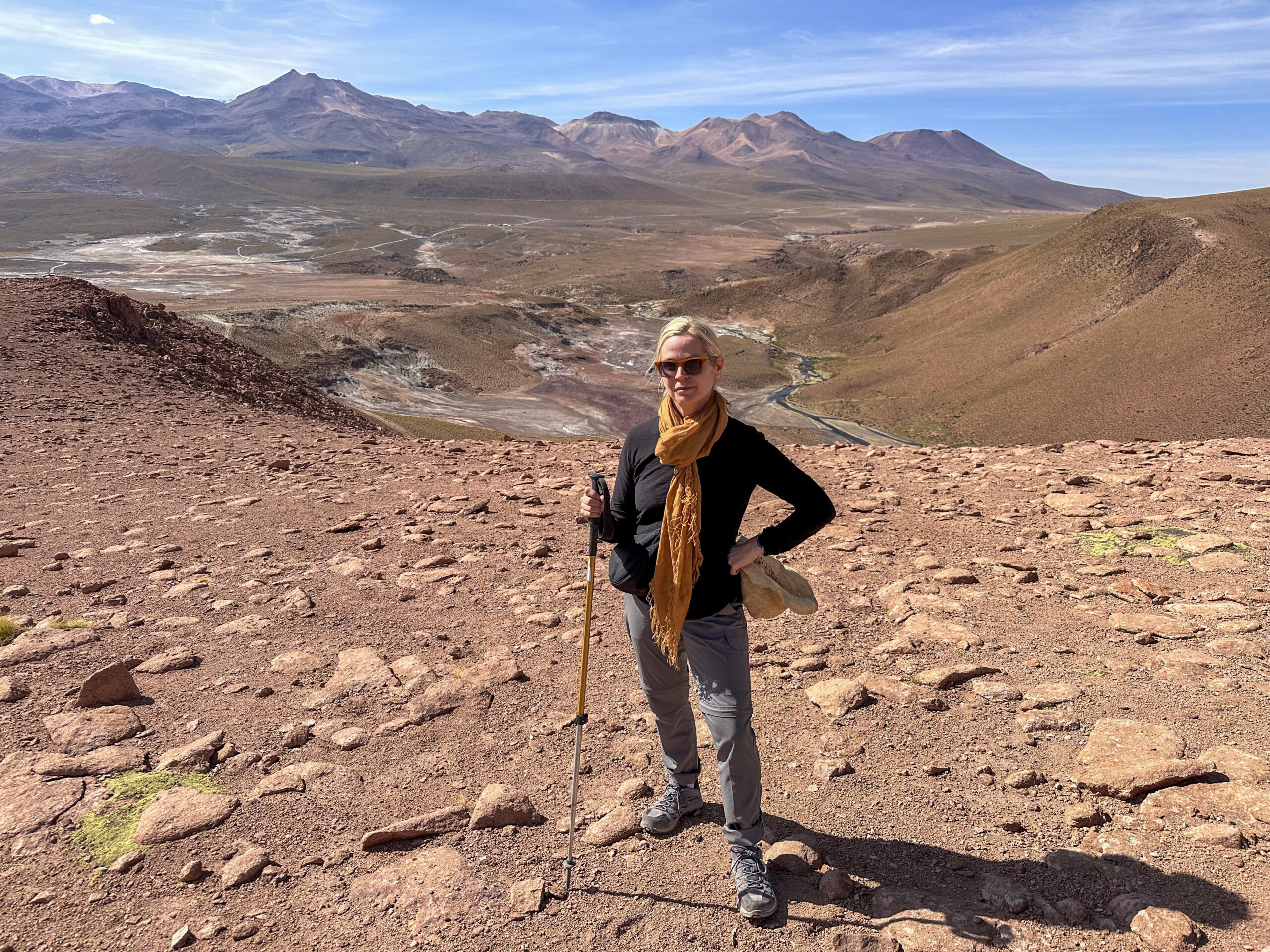
About to start the descent. Courtesy of Lauren Mowery.
Walking along the Salado River, we encountered an array of wildlife, many animals remarkably calm despite the indelicate footfalls of our home invasion. Vicuñas, a small South American camelid known for its soft coat, typically scamper off at the sign of intruders. Instead, whole families chomped on short grasses a few feet away, motionless but for one eye tracking our group. We encountered numerous viscacha, cute rodents in the chinchilla family with large ears that bounced as they bounded across rocks and into crevices. I spotted a few black-breasted, orange-beaked cordilleran carancho birds perched above the valley floor, while llamas congregated around patches of springy, emerald-hued lichen.
From the technicolor contrasts in pinks, reds, yellows, and greens, the proximity to wildlife, to the physical challenge of hiking at altitude, I finished Volcán Blanco triumphant, humbled, and in awe of the world we inhabit. The day ended at a predetermined pick-up location with a picnic spread outside of the van. I sat on a small rug, eating quinoa from a thermos, sipping on a local lager. I took one final moment for myself, savoring this extraordinary privilege.
How to Prepare
While a little over four miles sounds easy to most hikers, the elevation factor changes the game. At the onset of my hike, a Bolivian woman staggered in drunken dizziness, a telltale sign of altitude impairment. Our guide, out of the utmost precaution, escorted her back to the van to wait for the group. Advice doled out the day prior included avoiding alcohol, drinking several liters of water, and eating light to avoid nausea. In fact, climbers aiming for Everest frequently bag the peaks of the Atacama in their training. In other words, altitude sickness can hit fast and hard, so heed the advice of guides. Otherwise, pack for a chilly morning start, bring layers, and expect to be warmed up by ultraviolet exposure by mid-day. Bring a wicking light-colored long sleeve shirt, ripstop hiking pants, hiking boots, sunscreen, plus a hat.
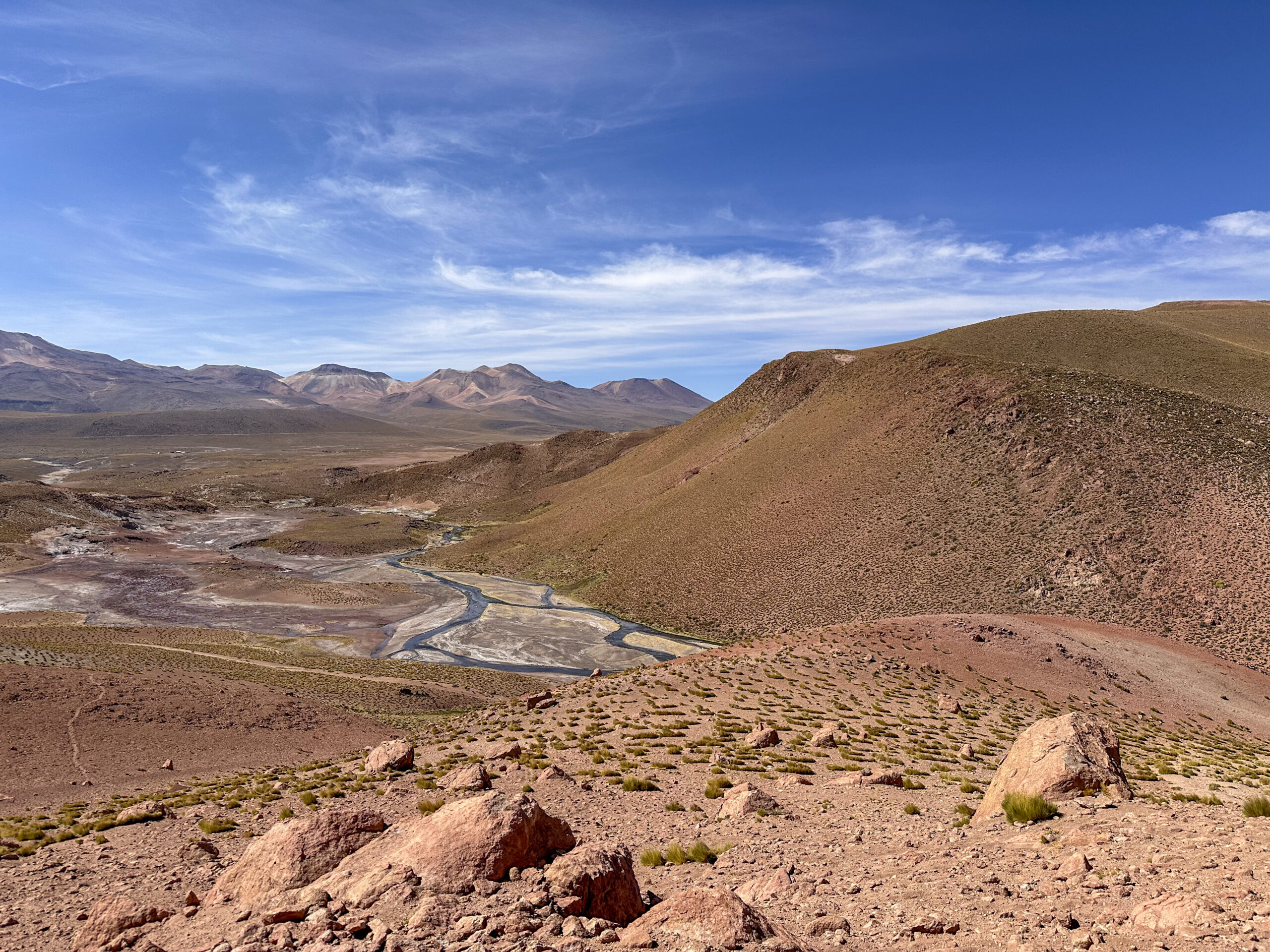
Stunning views at every turn. Courtesy of Lauren Mowery.
Guide Service
Tourist access to this trail is limited to guided service by Explora Lodge who have an arrangement with the local community. There are numerous dangers along the way including thermal waters bubbling at 178 degrees Fahrenheit, enough to melt an errant foot. Explora’s trained guides know the sector and steer guests along the proper footpath to avoid accidents. The incomparable Inés Zúñiga Irazabal led my journey. An avid wildlife enthusiast and photographer with deep knowledge of the region’s history, geology, and even the stars (she’s writing a stargazing book for tour guides), Inés was not only a dream to spend the day with, but has remained a friend and a guide I’d heartily recommend, whether through Explora or for private tours.
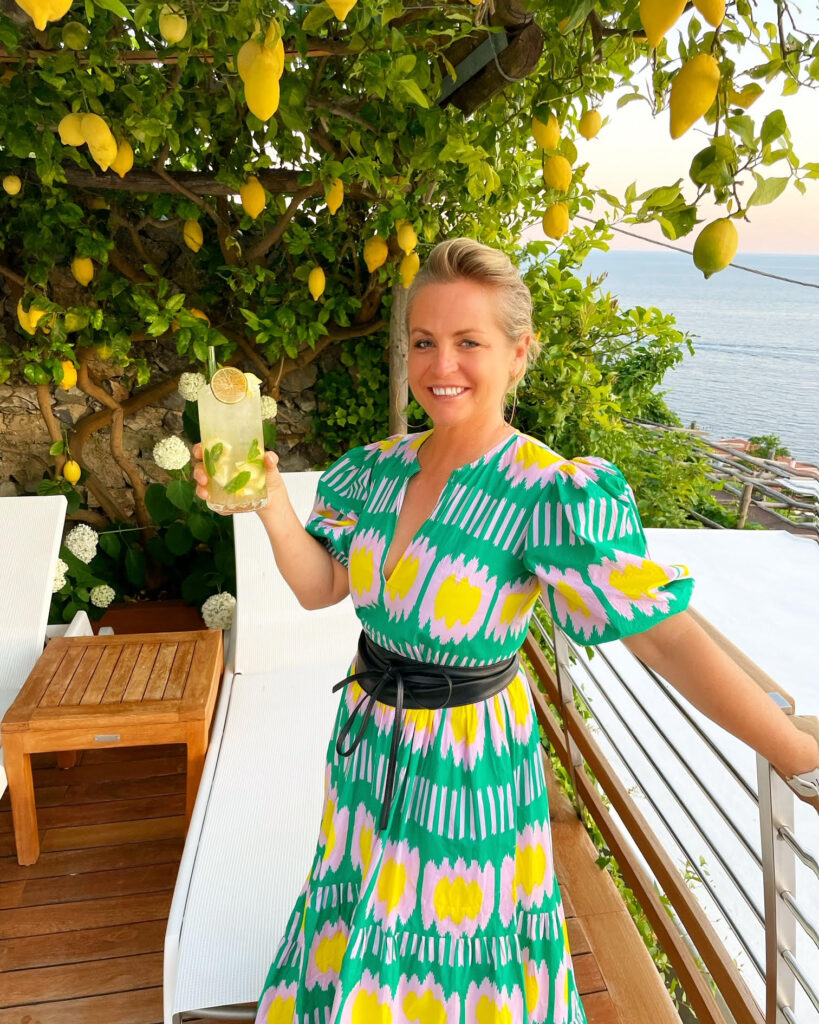
Founder and CEO of Azure Road, Lauren Mowery is a longtime wine, food, and travel writer. Mowery continues to serve on Decanter Magazine’s 12-strong US editorial team. Prior to joining Decanter, she spent five years as the travel editor at Wine Enthusiast. Mowery has earned accolades for her writing and photography, having contributed travel, drinks, food, and sustainability content to publications like Food & Wine, Forbes, Afar, The Independent, Saveur, Hemispheres, U.S. News & World Report, SCUBA Diving, Plate, Chef & Restaurant, Hotels Above Par, AAA, Fodors.com, Lonely Planet, USA Today, Men’s Journal, and Time Out, among others.
Pursuing her Master of Wine certification, she has also been a regular wine and spirits writer for Tasting Panel, Somm Journal, VinePair, Punch, and SevenFifty Daily. Mowery is a graduate of the University of Virginia and Fordham Law School, and she completed two wine harvests in South Africa.
Follow her on Instagram @AzureRoad and TikTok @AzureRoad
North Stars: Certifications, Community Support, Wildlife Ecosystems


